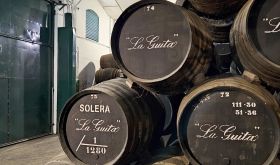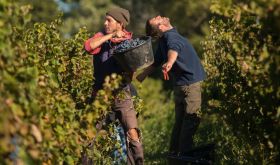From NZ$24.99, €20.50, £17.56 (2019 vintage), $28.99, AU$41.99, HK$245, SG$54
Most Sauvignon Blanc from New Zealand follows a tried-and-tested formula, and while its global popularity seems undimmed there are few that appeal to the highly engaged wine drinker. But not all Sauvignon Blancs are made equal; you say tomato, I say Te Mata.
Rather than the Marlborough model of gooseberries and grassiness, Te Mata's Cape Crest aligns with the Bordeaux model of dry, oak-influenced, ageworthy Sauvignon Blanc – and absolutely bears comparison with the great whites of Pessac-Léognan and Graves.
The 2020 vintage is a blend of 85% Sauvignon Blanc, 9% Sémillon and 6% Sauvignon Gris, fermented and matured in French oak barriques (of which 30% were new) for 11 months, which is very much the traditional recipe for the style. The result is a lip-smacking combo of butter, cream and spice that comes from from the oak and malolactic conversion, alongside box-fresh citric fruit and leafy notes that are the hallmarks of the variety.
Te Mata are best known for their reds, especially the much-admired Coleraine bordeaux blend, but when tasting their range recently it was Cape Crest that stood out for me. Not only are the flavours both utterly delicious and wholly representative of an underrated style, but it also has a beguiling waxiness that would make it an ideal partner for many types of dish. I can imagine it holding up equally well to seafood salads, creamy sauces, or even local lamb cooked with Moroccan spices.
The fruit comes from their vineyards in the Bridge Pa subregion, pictured above, which were planted in 1990 and 2000 – relatively recent considering Te Mata's first vines were planted in 1892. By coincidence, Monday's entry in this year's writing competition was written by Tobias Buck of Te Mata, giving a personal and touching account of the estate. As well as detailing the many regenerative and sustainable practices they are undertaking, Tobias reveals the fervent yet stoic passion that this land clearly inspires in him and his family – it is well worth a read.
The name Cape Crest, incidentally, is a reference to the most southerly point of Hawke's Bay, home to a colony of gannets, one of which adorns the label. The first vintage was 1984 and this wine was, most unusually for a New Zealand white, bottled exclusively under cork until the 2020 vintage – very bordelais!
I asked the team at Te Mata about this and senior winemaker Phil Brodie responded: 'We have gone to screwcap with Cape Crest from the 2020 vintage. The winemaking finishes the day the customer opens the bottle. We love Cape Crest in its youth, but also with bottle age. We have our own bottling line and started a screwcap closure trial 15 years ago looking at different screwcap brands having different wad compositions with varying OTRs. We then analysed and tasted the wines over the years to see how they evolved aromatically and texturally before committing to a particular brand and wad.'
Commercial sales manager Vince Labat adds, 'We went with a 50/50 screwcap/cork mix for vintage 2020 and 2021. We are transitioning some markets across to the screwcap who have long had the cork. Hence taking this approach. It has been well accepted so as of the 2022 vintage it will be 100% screwcap.'
All but one of the prices stated above are for the 2020 vintage. The UK price is for a listing of the 2019 vintage, which is sold at several retailers who must surely be rolling on to the 2020 before long. Earlier bottlings of Cape Crest – our tasting-note database covers seven vintages – have all scored at least 16.5, with conservative drinking windows indicating ageability of four years. Te Mata's own cellaring guide suggests the wine can last for 20 years – and I wouldn't disagree.
Great oaked Sauvignon Blanc is certainly one of the few great white wines that can benefit from maturity, so don't let age dissuade you.
For a world tour of Sauvignon Blanc, read Jancis's recent article, which includes several more recommendations.















